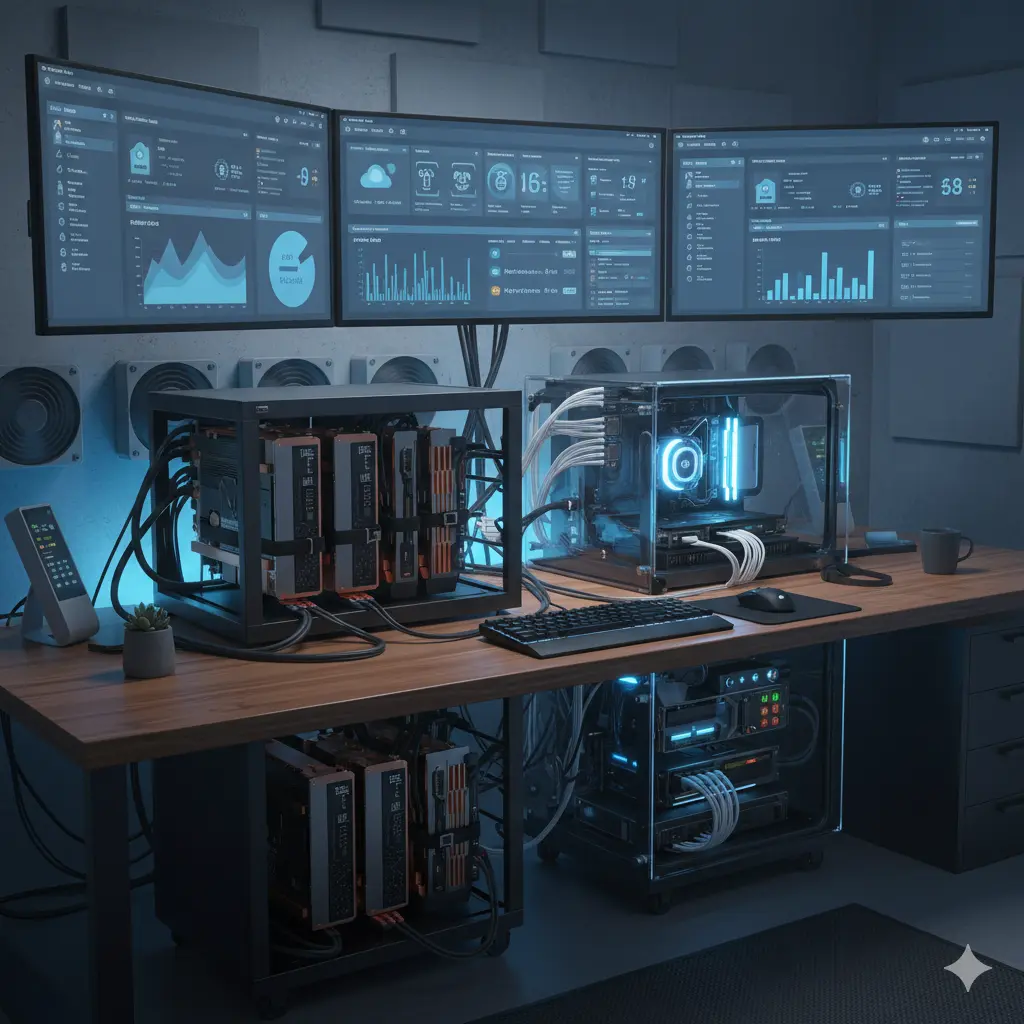A Practical Guide for Builders, Developers, and Anyone Chasing Affordable Compute
The search for affordable GPU power looks very different in 2025. What used to require enterprise budgets has become possible for students, hobbyists, and small teams. Falling prices in consumer cards, intense cloud competition, and a strong second hand market for high VRAM GPUs have reshaped the entire landscape.
The most important idea today is that VRAM matters more than speed. Modern AI models depend on memory capacity. When a GPU runs out of VRAM, the task slows to a crawl or fails entirely. Because of that, the conversation has shifted away from raw performance numbers toward cost per gigabyte of VRAM and how well a card handles quantized models.
There are three practical paths to cheap compute in 2025. Each has its own strengths and compromises.

Cloud Servers: Fast and Flexible
Cloud rental has changed the economics of AI work. Specialist platforms now offer high VRAM GPUs for very low hourly prices. Cards such as the RTX 3090 run for around 0.11 dollars per hour, while an A100 40GB appears for roughly 0.40 dollars. Even the newer H200 can be found at about 2.35 dollars.
These prices are so low that short tasks cost less than the electricity bill of a home server. Users who only need power occasionally can finish large jobs without buying expensive hardware. Costs fall even further through spot or interruptible instances, though these require good checkpointing. Regional price differences also matter, since east coast zones are often cheaper.
Cloud GPUs fit users who want instant access to strong hardware with no cooling or noise issues.
New Consumer GPUs: Simple to Own
Lower prices in the RTX 50 series and AMD’s latest cards make new consumer GPUs a smooth and beginner friendly option. Cards such as the RTX 5060 offer strong efficiency at around 339 dollars. The AMD RX 9060 XT delivers 16GB VRAM for about 379 dollars, giving it a memory advantage. Intel’s Arc B570 provides a very low entry point with 10GB VRAM.
The challenge is VRAM. Many of these cards sit at 10 to 16GB. This is not enough for large models unless heavy quantization is used. The cost per gigabyte is also higher than refurbished server cards.
Still, these GPUs run quietly, have warranties, and require no special cooling. This makes them ideal for dual use desktops and light AI tasks.
Refurbished Server GPUs: Maximum VRAM per Dollar
Older data center GPUs remain unmatched in value. The best known example is the NVIDIA Tesla P40. With 24GB VRAM and a price between 220 and 300 dollars, it offers the lowest cost per gigabyte in the entire market. Two cards provide 48GB total, which is enough for heavy LLM inference when combined with quantization.
These cards were designed for server racks, so they need blower fans or strong directed airflow. This increases noise. They also draw more power and often need server PSUs with breakout boards. These requirements take time to build correctly.
Other refurbished choices include the Tesla T4, known for very low power draw, and various Quadro RTX cards with ECC memory for stability.
This path suits long running homelabs that demand large VRAM capacity.
| Option | VRAM Range | Cost Level | Main Strength | Best Use |
|---|---|---|---|---|
| Cloud GPU Rental | 24GB to 80GB+ | Low hourly cost | Instant access to strong hardware | Short projects and burst training |
| New Consumer GPUs | 8GB to 16GB | Medium upfront cost | Quiet, simple, warranty included | Light AI work and everyday PCs |
| Refurbished Server GPUs | 16GB to 24GB+ | Low hardware cost | Best VRAM per dollar | Heavy inference and homelabs |
Building the Platform Around the GPU
A GPU server needs a balanced system. RAM should roughly match twice the total VRAM. A dual P40 setup with 48GB VRAM works best with 96GB to 128GB RAM. Older server motherboards make this affordable and also provide the PCIe lanes needed for multiple GPUs.
Cooling and power matter as well. Many users choose open frame chassis or second hand rackmount cases because they handle heat better than standard towers. Server PSUs paired with breakout boards create stable power for multi GPU arrays.
Making Smaller VRAM Work Through Optimization
Modern AI relies strongly on quantization. Shifting from full precision to FP16 or 4 bit formats reduces memory use by half or more. This makes older 24GB cards capable of running models that once needed four times that memory. Pruning, distillation, and LoRA adapters further stretch capacity.
For cloud users, smart batching, caching, and tracking costs help avoid waste. For home servers, tuning inference to match hardware keeps throughput steady.
These techniques make budget builds far more useful than raw numbers suggest.
Choosing the Right Path
The best option depends on workload and patience.
Select cloud rental if your use is intermittent and you need large VRAM only for short periods.
Choose new consumer GPUs if you want a quiet, simple, warranty protected desktop.
Choose refurbished server GPUs if your priority is VRAM capacity at the lowest price and you can handle cooling and power modifications.
Cheap compute in 2025 gives builders more freedom than ever. With the right planning, even small budgets can support real AI development and high context inference work.




